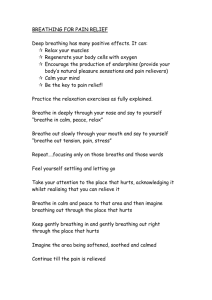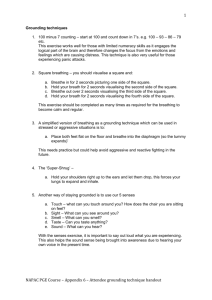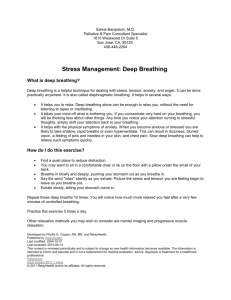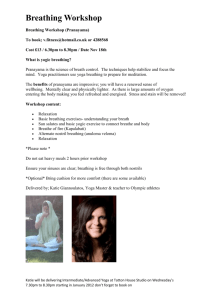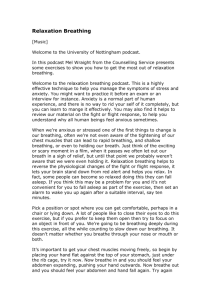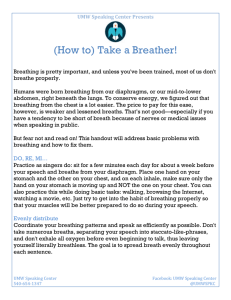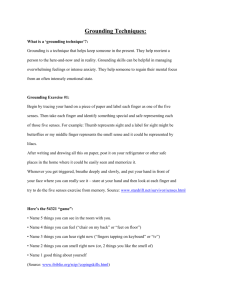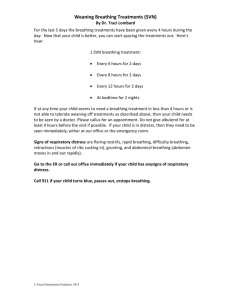About Breathing
advertisement
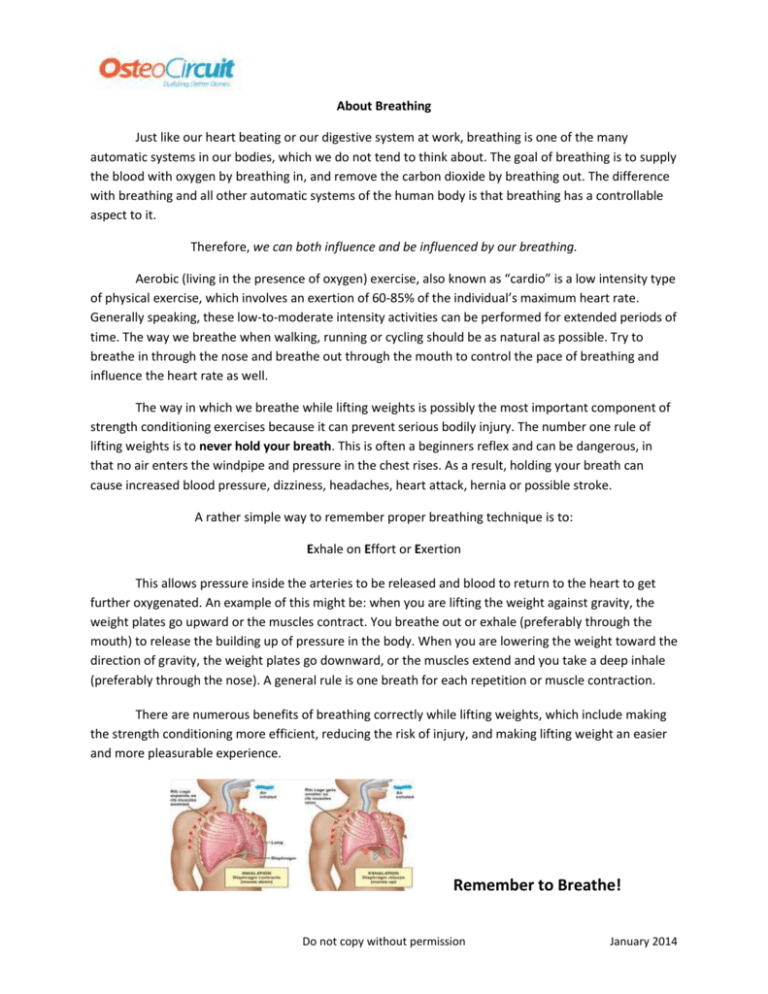
About Breathing Just like our heart beating or our digestive system at work, breathing is one of the many automatic systems in our bodies, which we do not tend to think about. The goal of breathing is to supply the blood with oxygen by breathing in, and remove the carbon dioxide by breathing out. The difference with breathing and all other automatic systems of the human body is that breathing has a controllable aspect to it. Therefore, we can both influence and be influenced by our breathing. Aerobic (living in the presence of oxygen) exercise, also known as “cardio” is a low intensity type of physical exercise, which involves an exertion of 60-85% of the individual’s maximum heart rate. Generally speaking, these low-to-moderate intensity activities can be performed for extended periods of time. The way we breathe when walking, running or cycling should be as natural as possible. Try to breathe in through the nose and breathe out through the mouth to control the pace of breathing and influence the heart rate as well. The way in which we breathe while lifting weights is possibly the most important component of strength conditioning exercises because it can prevent serious bodily injury. The number one rule of lifting weights is to never hold your breath. This is often a beginners reflex and can be dangerous, in that no air enters the windpipe and pressure in the chest rises. As a result, holding your breath can cause increased blood pressure, dizziness, headaches, heart attack, hernia or possible stroke. A rather simple way to remember proper breathing technique is to: Exhale on Effort or Exertion This allows pressure inside the arteries to be released and blood to return to the heart to get further oxygenated. An example of this might be: when you are lifting the weight against gravity, the weight plates go upward or the muscles contract. You breathe out or exhale (preferably through the mouth) to release the building up of pressure in the body. When you are lowering the weight toward the direction of gravity, the weight plates go downward, or the muscles extend and you take a deep inhale (preferably through the nose). A general rule is one breath for each repetition or muscle contraction. There are numerous benefits of breathing correctly while lifting weights, which include making the strength conditioning more efficient, reducing the risk of injury, and making lifting weight an easier and more pleasurable experience. Remember to Breathe! Do not copy without permission January 2014


